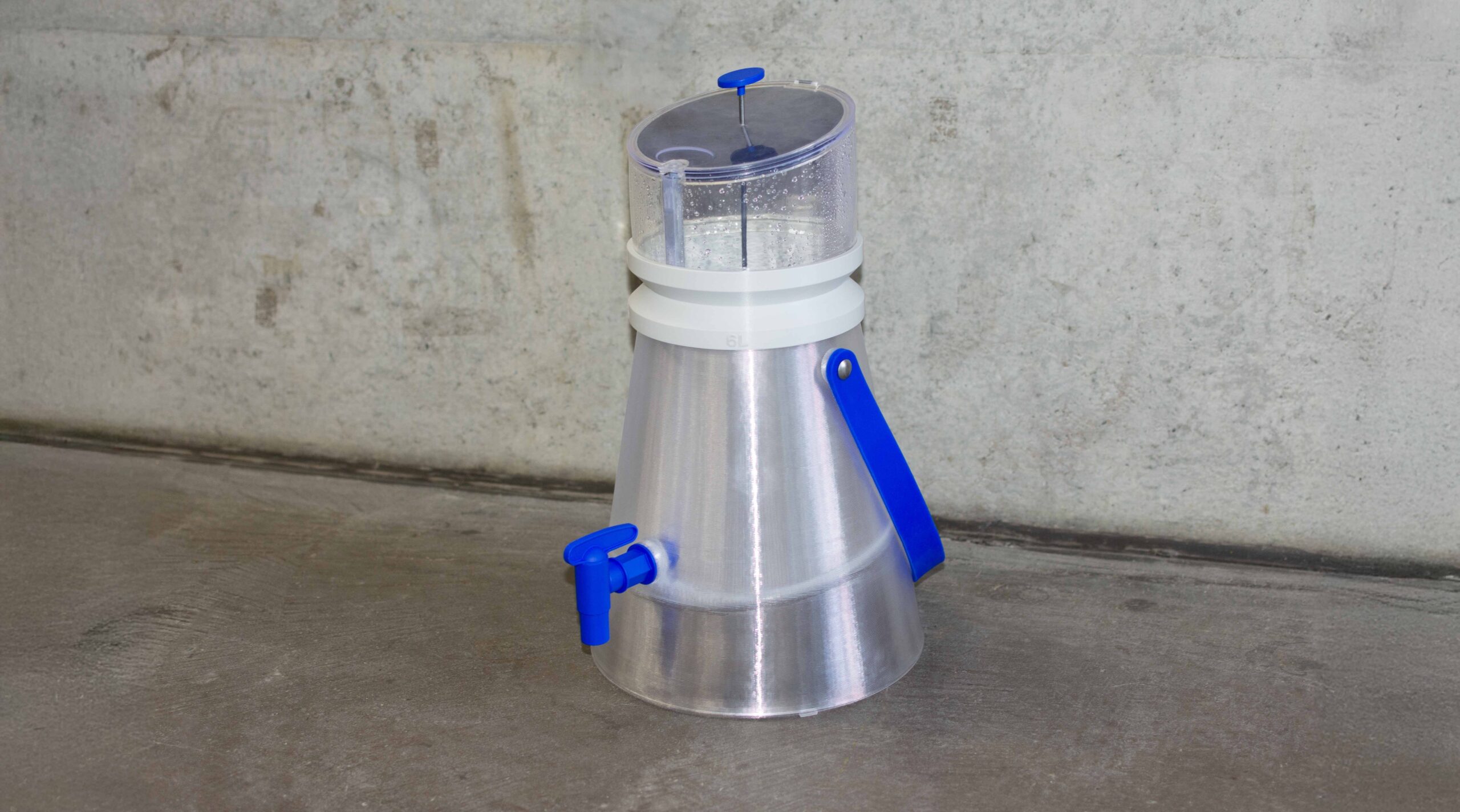A groundbreaking 3D-printed device, named Water from Air, has been developed by recent graduates from FH Münster University of Applied Sciences, Louisa Graupe and Julika Schwarz. This innovative prototype claims to produce up to 1.6 gallons (approximately 6 liters) of clean drinking water daily by extracting moisture from the atmosphere.
The device operates primarily through 3D-printed components and utilizes advanced technology to draw in air, extract water molecules, and condense them into liquid form. The incorporation of built-in metal-organic frameworks helps filter out most air pollutants, potentially eliminating the need for additional filtering systems. A convenient spigot at the base allows users to pour the filtered water directly into a container.
Potential Solution for Water Scarcity
While still in the development phase, Graupe and Schwarz envision the device as a practical solution for households facing water scarcity challenges. They describe it as a “mobile water producer and storage unit,” emphasizing its adaptability for various geographical and social contexts. The design aims to provide individuals and families with a sustainable water source, particularly in regions where access to clean water is limited.
The current model features stackable sections, with the upper part resembling a French press. During operation, the device can collect water molecules from the air for about an hour before closing and heating up to initiate condensation. One full cycle lasts approximately two hours and can yield around 17 fluid ounces, or the equivalent of a medium-sized plastic water bottle. Running the device continuously could provide enough water to sustain a family of four, assuming each person consumes 1.5 liters daily.
Despite its promise, the device is not yet ready for consumer use. In response to inquiries on the design platform Behance, Schwarz noted that the materials are still under research and that the patenting process is ongoing. Pricing details have not been disclosed.
Addressing Global Water Insecurity
The motivation behind this project stems from the alarming rise in water insecurity worldwide. According to the Centers for Disease Control and Prevention, approximately 2.2 million people in the United States live without basic plumbing or access to running water. Research from Arizona State University indicates that up to 12 percent of residents may be experiencing some form of water insecurity, disproportionately affecting Latino, Black, and Indigenous communities.
On a global scale, the World Economic Forum estimates that about 72 percent of the world’s population experiences some degree of water insecurity, with around 8 percent facing critical water shortages. Current methods for addressing these challenges often rely on large-scale, costly systems that may not meet the specific needs of individual households.
The design of the Water from Air device offers the possibility for localized production. Because the design files are digitally stored, communities could potentially manufacture their own devices, reducing reliance on centralized distribution channels.
Graupe and Schwarz emphasize the potential impact of their work, stating, “The basic idea of obtaining water from the air has great potential for the future, as the need for clean water sources is increasing.” They envision larger-scale applications that could supply entire communities with the necessary water resources.
As the world grapples with increasing water scarcity, innovations like the Water from Air device could play a significant role in addressing this pressing global issue.
